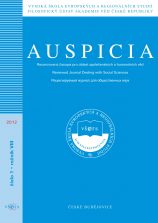Revisiting Optimum Currency Areas: What Has Changed with the Crisis in Euro Area?
Revisiting Optimum Currency Areas: What Has Changed with the Crisis in Euro Area?
Author(s): Ľubomíra GertlerSubject(s): Economy, Economic policy, EU-Accession / EU-DEvelopment
Published by: Vysoká škola evropských a regionálních studií, z. ú.
Keywords: optimum currency area; market integration; euro area; vector auto regression; impulse response function;
Summary/Abstract: The aim of this study is to create an instrument to identify the countries constituting an optimum currency area. This is done on the basis of the General Purchasing Power Parity approach, while deriving impulse response functions from an unrestricted VAR. The initial size of responses, their persistence and dynamics with which the initial shock dissipates then constitutes the grounds for identification to what extent a country may be considered a part of an optimum currency area. The monthly time series of real effective exchange rates relative to the trading partners have been used to express relative competitiveness, transition of external shocks and bilateral market integration which we use then as a proxy for our evaluation. The empirical findings include the evidence for Slovakia’s gradual shift towards the optimum currency area, while the contrary evidence of drift away of Hungary and the Czech Republic. Some findings also relate to the extent of integration of the euro area countries in the recent crisis episode. The article is the result of the research project “Creating excellent department of economic research on civilization challenge in 21st century” (ITMS 26240120032). The project is co-financed from the EU.
Journal: Auspicia
- Issue Year: 2013
- Issue No: 1
- Page Range: 46-53
- Page Count: 8
- Language: English

